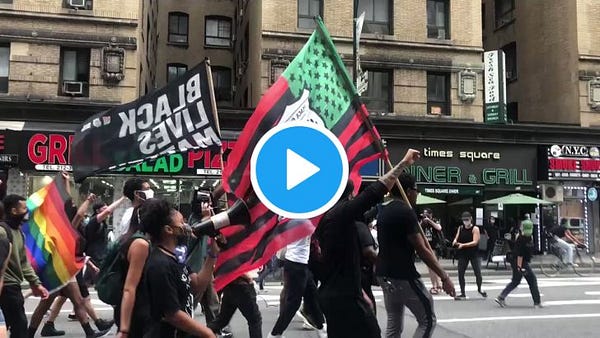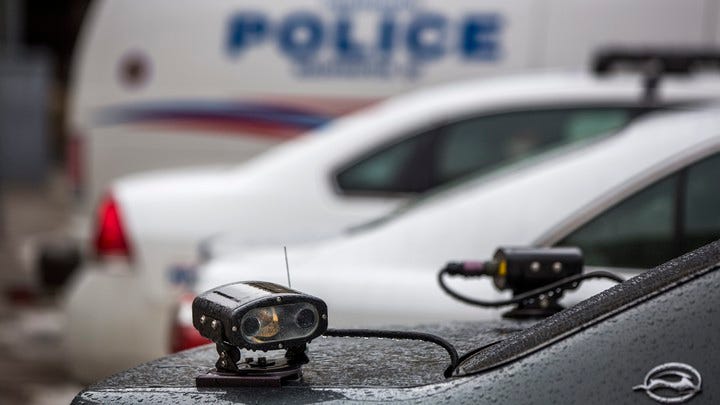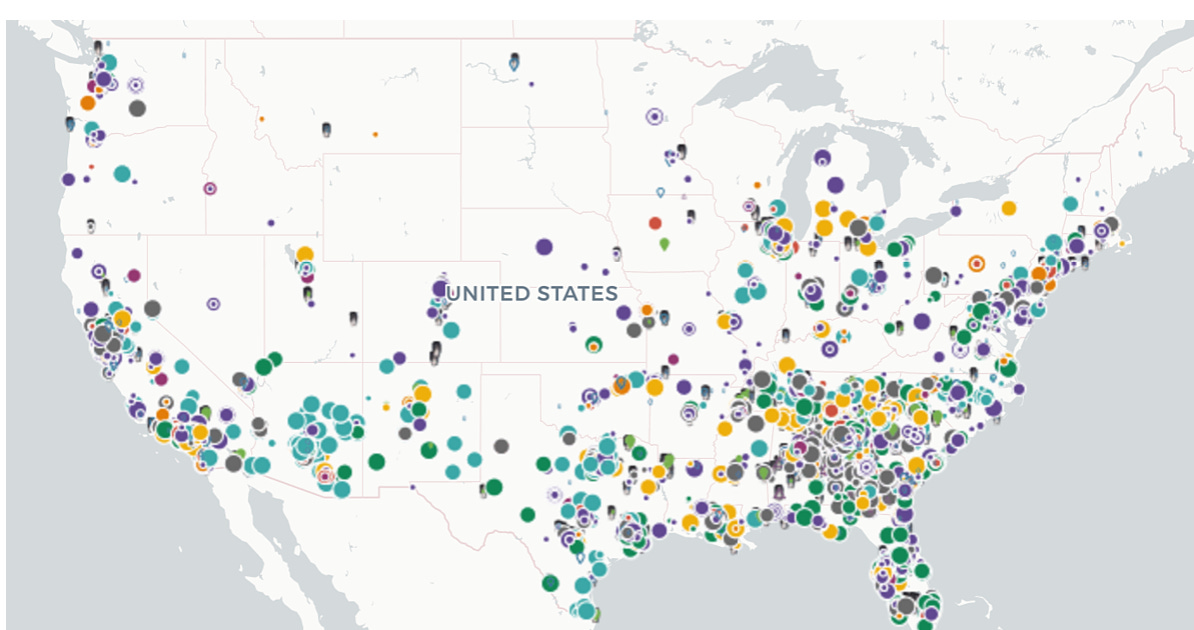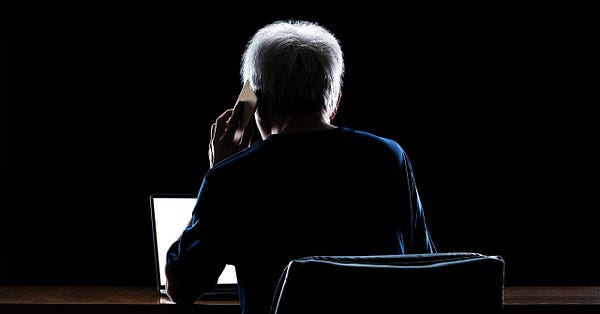Police Around the US Are Using Facial Recognition To Hunt Down Protestors
Volume II, Issue VIII
Hello again everyone, I hope all y’all are doing well. Gonna go ahead and jump right in today, but a quick little reminder to please share this newsletter with someone you know if you find this useful and have a moment. Thanks, y’all.
Also, go Astros! (everyone else, come at me.)
Today’s Big Story
Police Around the US Are Using Facial Recognition to Track and Arrest Protestors
When Derrick Ingram and thousands of other activists took to the New York streets this summer to protest against police brutality, did they know they were being watched? Obscured behind technicolored masks amid the sweltering June heat, one can’t help but feel a sense of anonymity when shoulder to shoulder amid the masses of fellow protestors. For most of history, this dissolution of the self into the collective rang largely true for protestors, whether they be burning effigy’s of French lords in the 18th century, or toppling dictator’s statues in Sudam Hussein’s Iraq.
While certain individual protestors have always found themselves subject to the state’s wrath, mass collectives have managed to function, in no small part, because of the perceived anonymity that comes with sinking into the amorphous cloud of dissenters.
Back in June, I wrote my concerns that this style of political protest could be in jeopardy thanks to the rapid, largely unregulated expansion of surveillance technology. Each day, that pessimistic prophecy seems to be becoming a permanent reality.
Police Attempt to Seige Derrick Ingram’s Apartment
On June 14, two weeks after mass protests over police brutality engulfed the country, a smaller, but vocal offshoot of those protests continued on in Manhattan. Leading some of those protestors was 28-year-old Derrick Ingram, a Black Lives Matter activist and co-founder of the group Warriors in the Garden. Marching in midtown, Ingram and his followers decried police violence and called for the removal of New York Police Commissioner Dermot Shea.


While the exact details of what happened next aren’t entirely clear, what we do know, according to a New York Post article, is that Ingram was stopped by an officer who tried to prevent him from crossing a police barrier. According to that officer, a scuffle ensued where Ingram allegedly resisted arrest. With a bullhorn in his hand which he had been using to project his voice on the streets, Ingram allegedly shouted into the arresting officer’s ear.
The officer claims the noise from the bullhorn caused hearing damage. That claim was enough to charge Ingram with felony assault in the second degree. That charge was later dropped to a misdemeanor assault, but only after the Manhattan District Attorney Cyrus Vance personally intervened.
Fast forward two months to August. At around 7 a.m. while hanging out in his Hells Kitchen apartment, dozens of police began storming the neighborhood. Helicopters hovered overhead and more than two dozen police vehicles were reportedly used to shut down nearby streets. On the ground, over 50 police officers, some clad in riot gear, stacked up and gathered outside Ingram’s apartment. On the other side of Ingram’s doors, police K-9 units yelped and barked.
According to Gothamist, police demanded Ingram open his door, to which the activist responded by requesting the police present a warrant. They never did. Instead, a standoff ensued, with Ingram refusing to unlock his door and police refusing to leave.
Through the hum of helicopter blades and police chatter, Ingram started up his phone and live-streamed his side of the encounter.


“What did I do? What did I do?” Ingram says during the video, “I was born black, that’s what I did.” Later during the stream, one of the police officers on the other side of the door can be heard saying, "Why don't you be the warrior you state you are and come out and face the system.”
This all played out live to Ingram’s supporters, and eventually, dozens of people began filling the streets outside of his apartment. With the crowd ballooning in size, the police reluctantly backed down around six hours after their failed siege began. Ingram turned himself in the next day, apparently on his own accord.
A Failed Seige Fueled by Facial Recognition
Ingram supporters and activists condemned police for what they saw as an overzealous and unnecessary response to what was perceived by many as an inconsequential act. Even New York officials, including a spokesperson for the city’s DA, spoke out against the police’s tactics.
“Our office does not condone the extraordinary tactics employed by police on Friday,” NYC DA spokeswoman Danny Frost, told the New York Daily News. “These actions were disproportionate to the alleged offense that occurred two months ago, and unjustifiably escalated conflict between law enforcement and the communities we serve.”
For what it’s worth I agree with that assessment. But that’s not really why I’ve chosen to focus on Ingram’s case. More than the disproportionate use of force, more than the militaristic tacts used to seemingly suppress Ingram and his fellow protestors, I was struck by a piece of paper clutched in the hands of one of the officers outside Ingram’s apartment.
That document, titled Facial Identification Section Informational Lead Report, displayed a headshot of Ingram wearing a blue backwards baseball cap.

Responding to questions from a Gothamist reporter, a spokesperson from the NYPD confirmed police had indeed used facial recognition, based on the image in the document, along with other surveillance tactics to track and ultimately determine Ingram’s whereabouts. It’s unclear exactly how long that tracking occurred.
The police official added an additional statement.
“The NYPD uses facial recognition as a limited investigative tool, comparing a still image from a surveillance video to a pool of lawfully possessed arrest photos.”
Yet, the realties of Ingram’s case fly directly in the face of the NYPD’s own professed protocol. The photo used above wasn’t taken from a “lawfully possessed arrest photo,” at all, but rather from Ingram’s own Instagram account. If you don’t believe me, you can view the photo for yourself here.
This newsletter, and myself by association, are far from neutral when it comes to facial recognition. I’ve spent many words warning of the possible dangers of and proven inconsistencies of the tech. But even if I were someone explicitly in support of police use of facial recognition, the Ingram case would still pose a problem. New York City’s police department, like hundreds of others around the country, sold the public on facial recognition by claiming it would be used infrequently and via restrictive conditions (like limiting photos only to mug shots.)
These restrictions were urged, even by more conservative figures, to prevent the indiscriminate and wide-scale tracking of everyday citizens without a warrant. What Ingram’s case shows is that, at least in New York, police possess the ability to scarp any person’s public social media account and use that image to train facial recognition altogether. On top of that, police departments around the country are increasingly turning to third party starts up, like the now-notorious Clearview AI, to gather up billions of social media photos of everyday people into a database of searchable faces.
Put more simply, the notion that police and governments would do as they say and use these technologies sparring has turned out to be complete bullshit.
In the wake of the Ingram revelations, some officials in positions of power have signaled they may be open to change. One of those was New York mayor Bill de Blasio, who chose his words carefully last week.
“We have to be very careful and very limited with our use of anything involving facial recognition,” Blasio said to Gothamist “Those standards need to be reassessed. It’s something I will do with my team and with the NYPD.”
For activists and those looking for change, however, these words continually fall flat. In July, largely in response to the Black Lives Matter protests, New York’s City Council passed a bill requiring police disclosure of how it uses surveillance technology, including facial recognition. Called the Public Oversight of Surveillance Technology (POST) Act, the move was seen by some as a significant step, either in practice or symbolically, by the city to reassess its use of surveillance tech. Then, less than two months later, that same technology has been illegally used to assist in the deployment of over 50 police and dozens of vehicles to a tiny Hells Kitchen apartment. Not exactly reassuring.
While I’m not an activist, it’s blunders like these that make it easy to understand why any and all posturing made by police and movements over surveillance regulation have been met with near-immediate skepticism.
A National Issue of Political Suppression
For those riding the “New York is burning,” bandwagon, it’s worth pointing out that facial recognition aided arrests of protestors are occurring elsewhere as well.
In Miami, police partnered with Clearview AI to track and identify a woman who allegedly hurled a rock at a police officer during a May protest.
Like New York, the MPD has a policy that specifically prohibits facial recognition form being used to surveil people exercising their first amendment rights to protests. In this case, police justified the surveillance authorization by claiming the rock thrown constituted an assault. While that may seem reasonable enough to some, it potentially sets a hopelessly vague standard. If throwing a rock and yelling into microphone counts as assault, then does throwing a water bottle count too? What about spray painting a car or yelling obscenities?
And for those who would argue that surveillance is the price paid for “nonpeacefull protest,” I’d argue they might be missing the point of protests entirely. The right to gather and express dissent are enshrined in the very first amendment of the constitution specifically because, during real meaningful protests, dissidents may tred closely along, or slightly step outside the bounds of normal laws. Surveilling protestors for edge case examples seems to defy the spirit of those constitutional protections.
What it does do, however, is act as a retardant to future protest. When people worry as if their slightest transgression or act of political dissent may lead, however improbably, to a platoon’s worth of armed law enforcement threatening to knock down their door, they may choose to sit out altogether. That’s probably not going to deter the flag waiving radical chomping at the bit for any opportunity to shout in public, but it will affect the far larger percentage of would-be protestors who are less committed. It’s those people who shift protests from a single event into a global phenomenon and its those people who the unregulated surveillance apparatus most direct threatens to suppress in western democracies.
Like what you’ve read so far? If so, please consider becoming a paid subscriber for $5 per month.
If that’s too much commitment, no worries. You can also support the newsletter by making a one-time Venmo donation to @Mack-DeGeurin to help keep this content coming.
In Other News…
1: Trump Says He Might Pardon Snowden

In an interview with the New York Post last week, President Trump said, “there are a lot of people that think he [Snowden] is not being treated fairly.”
The comments are completely at odds with Trump’s previous comments about Snowden.
As the Post story notes, before assuming office, Trump sent out at least 45 different tweets in which he referred to Snowden as a traitor.
“I guess the DOJ is looking to extradite him right now?” Trump said in the Post interview. “It’s certainly something I could look at. Many people are on his side, I will say that. I don’t know him, never met him. But many people are on his side.”
Trump: “I’ve heard it both ways. From traitor to he’s being, you know, persecuted. I’ve heard it both ways.”
The seeming reversal of tone comes during Trump’s own personal involvement with alleged surveillance overreach.
By softening his stance on Snowden, the president may be looking to gain credibly with privacy advocates for his own case. That’s speculation, of course, but the timing is worth considering.
Snowden Tweeted about Trump’s public pondering on Friday.


Snowden altered the course of US history in 2013 when he sent troves of classified surveillance data to reporters at The Guardian and The New York Times.
Snowden, who leaked the information form Hong Kong after leaving his NSA station in Hawaii, has since sought refuge in Russia.
As discussed in Barton Gellman’s new book Dark Mirror, Sweden first attempted to gain amnesty from Ecuador but was suddenly left in limbo after US authorities revoked his passport.
Snowden then fled to Russia where he was granted asylum.
For years, critics, mainly from the more hawkish factions of both political parties, have accused Snowden of feeding national security information to the Russian government.
As of this writing, there’s been no proof of any such collaboration.
While in Russia, Snowden has continued to advocate for privacy and has worked with the security team to create privacy-focused technology.
Steve Nelson and Emily Bowden, The New York Post
2: Get Ready for a Nation Wide License Plate Reader Dragnet

The company, called Flock Saftey—which claims to deploy license plate readers o 400 different police departments—said its new Total Analytics Law Officers Network will bring them all together.
The company claims to have cameras active in over 700 cities.
Those are currently limited to use by law enforcement in those specific jurisdictions, but a unified network could change that.
With a connected national network, police in one state could track a vehicle through multiple states.
While that could potentially aid in criminal cases, the prospect of a seamless national surveillance system worries privacy advocates.

A special note to all of my Houston readers.
Bellaire, a community within the greater Houston area, just passed a bill allowing the use of license plate readers within its jurisdiction.
Those license plate readers (surprise) will also reportedly be run by Flock Saftey.
Unless someone wants to write their local city council member, I’d recommend driving very conservatively when passing through Bellaire for now on.
3: The Secret Service Is Reportedly Buying up Your Location Data

The details of the Secret Service purchase were revealed by Motherboard this week.
Motherboard obtained a contract in which the Secret Service paid the controversial social company Babel Street for troves of locaiton data on an untold number of Americans.
According to the document obtained by Motherboard, the secret service location data contract lasted from September 2017 to 2018. The agency reportedly paid over $1 million for the data.
Back in March, it was revealed that multiple government agencies had paid for millions of dollars worth of personal location data from a company called Babel Street through a service called Locate X.
The Secret Service was among those agencies.
That company reportedly locates personal data anonymously by scavenging the data harvested from seemingly innocuous apps.
Many, many, apps (even the Weather Channel app) track its users’ location data and sell that to data harvesters like Babel Street.
The US Customs and Border Patrol also reportedly purchased location data from Babel Street.
By any sensible reading of the law, this type of specific personal data should normally require a police warrant to obtain.
Yet, like many issues related to data in the information age, laws and procedures have lagged behind technological advances.
In 2018, the US Supreme Court ruled that police do in fact require a warrant to track your phone’s location.
But since this data was first bundled together and then sold to Babel Street, the Secret Service and others have been able to find a workaround in the complexity.
Joseph Cox, Motherboard, Rhett Jones, Gizmodo
Here’s What Else is New
Miami Police Used Facial Recognition Technology in Protester's Arrest
Making matters worse, the tech in question was reportedly a Clearview AI product.
An Alexa bug could have exposed your voice history to hackers
Oracle is in talks to acquire TikTok’s U.S. operations, challenging Microsoft, source says
Trump says he’s considering a ban on Chinese retail giant Alibaba
Cellphone apps designed to track COVID-19 spread struggle worldwide amid privacy concerns
This news adds credence to the argument that any truly effective COVID tracking app would likely come at the expense of personal privacy.
Long Reads/Food for Thought
This Map Lets You Report Landlords Using Tech to Screw Over Tenants
By Janus Rose, Motherboard


The Attack That Broke Twitter Is Hitting Dozens of Companies
By Andy Greenberg for Wired







